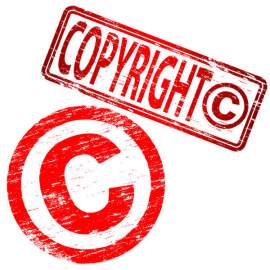
What You Must Know About Copyright Trademark

Popular In Copyright
Copyright Infringements Copyright Law What Is Copyright Legal Consequences Of Plagiarism Copyright Free Image Florida Prepaid Postsecondary Education Expense Board V College Savings Bank Famous Cases Of Copyright Law Copyright A Book Library Of Congress Copyright Copyright Laws For Motion Pictures Copyright Infringement Punishment Copyright Symbol
Under American law, the practices of both copyright and trademark law are geared toward providing distinctively new expressions of creativity with protection from being used by others. The main distinction made between a copyright and trademark relates to the scope of originality and authorship which is involved in the act of creative expression. While "works" of authorship are protected under copyright, trademarks pertain to a single word, phrase, or symbol which are not presented and understood as discrete and original works.
Commonly, compositions created for the sake of entertainment or artistic expression are placed under copyright and trademark protection which is extended to the distinctive ways in which a particular company, service, or good is advertised and packaged for consumers. While the interests of potential consumers are not necessarily protected under copyright, trademarks are essentially understood as identifying the source of a good or service, and therefore, providing guidance to potential consumers as to the reliability of the provider.
Trademark law is thus formulated primarily in terms of consumer protection and only secondarily for the benefit of authors, while copyright laws are not formulated, with the exception of fair use provisions, specifically with reference to the people other than the copyright holder who might wish to make use of the copyrighted item.
In contrast to the rigorous standard of originality which is
enforced through the concept of plagiarism for laws on copyright, trademarks
are held to less demanding expectations. Because of the essentially practical
purpose assumed of a trademark's function in increasing revenues for its holder
and clarifying distinctions between goods for consumers, trademarks may consist
of words or symbols commonly known. While a musical composer, for instance,
would not be allowed to lift a large section of another person's novel under
copyright, trademarks may be held of a strongly similar nature by companies in
widely varying fields without conflict.
Copyright and trademark
protection are thus secured by different bodies. The Library of Congress
provides registration for the purposes of copyright and trademark applications
are sent to the United States Patent and Trademark Office. The process of accepting an
item for copyright registration and the fees that may be incurred are generally
quite slight, while the process of trademark registration is suited to the purposes
of commercial enterprises and the ambiguities that may arise. It is thus
considered an adversarial rather than primarily administrative process
Both copyrights and trademarks may be used side by side. A basic slogan used for the
advertising of a product or service may be covered by trademarks, while the
advertising copy with which it is used and may even appear in will be
copyrighted. Similarly, a distinctive design used for printing a slogan in
advertisements might show what is considered by the Library of Congress to be
"sufficient authorship" in order to be protected under trademarks.
Copyright and trademark law may also cover articles that in content are substantially the same. An author may identify a short phrase or single word as an entire story. The way in which the assembly of language is presented provides the main criteria.
NEXT: What You Should Know About Website Copyright





















